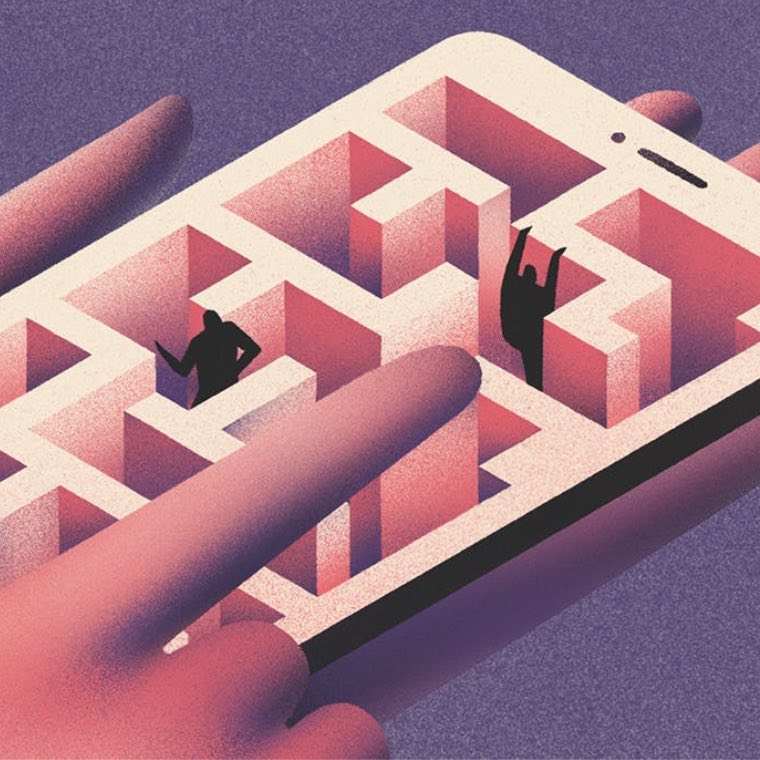
Design
Five creatives and their top AI design tools
March 2024Artificial Intelligence has shaken and not so much stirred as whirled the digital marketing industry around like a spin-drier on acid. It has also opened up a whole load of possibilities for creatives, making previously resource-hungry processes faster, more accessible and less expensive. Here, Elespacio’s creative team share their favourite AI design tools and how they use them.
Bruno Sanchez, lead advertising specialist: Midjourney
“You can start work on each project in a similar way but end up with something different every time”
Bruno, our design, video and animation expert, has chosen Midjourney, an AI image-generation platform, as the AI tool he uses the most.
Along with the likes of DALL-E and Stable Diffusion, Midjourney helps advertisers quickly create visuals, prototype concepts and brainstorm ideas.
Bruno, however, has used it mainly outside of work, for personal projects including one about medieval history in which he wanted to create a library of aesthetically coherent assets to use later on.

“I also created a poster for my son’s birthday, basically using the same work methodology but with a very different finish and intention,” he says. “I like to see how you can start work in a similar way but end up in very different places.”
“In my final example, I didn't even know what I intended to do, so I let Midjourney suggest things to me using the Zoom Out feature. This lets you expand the boundaries of a canvas without changing the content within it. I just started playing and improvising with it and ended up with something freaky and disturbing!”
Luis Niza, visual design: InsightFace plugin
“It’s a powerful tool but it can also be dangerous because it is so realistic”
Midjourney is the tool that Luis has also turned to recently, but it’s a plugin that has caught his interest.
“InsightFace allows you to replace the face in a portrait, either AI-generated or an actual photo, with another one. I see it as a super-powerful and useful tool. But it also can be quite dangerous, precisely because it is so realistic,” he says.

There are plenty of examples circulating of fake images of famous people (the image of Pope Francis is one), probably because there are countless images of celebrities that are easy to download and “face swap” with a simple prompt.
“What’s different now is that you can create a fake picture of anyone, without needing any online photos or information about them. On the plus side, it allows you to create in just a few seconds images that would previously have taken hours of production work.”
Maria Serra, design & video: Descript
“This tool is a very powerful tool for video content creation”
Maria has been using and experimenting with Descript, an AI audio tool designed to help you write, record, transcribe, edit and share podcasts. It’s also the audio machine behind many a YouTube or TikTok video.
“I use it to improve the audio of our Reels, removing any background noise and mistakes in the audio,” says Maria.
As well as its ability to remove the “ums” and “ers” and other filler words, its unnervingly accurate overdub voice synthesizer means you can edit the text to add words that are then spoken in your own voice.

“It can enhance and even clone your voice so you can use it to create new audio files,” says Maria. “I'm still trying to understand fully how it works, but I think this tool is very powerful for video content creation.”
Jota Gonzalez, design & video: Generative AI in Photoshop
“I can do this work manually, but it takes a long time”
Jota’s pick is another AI plugin. “I work with Photoshop on a daily basis and in the past year Adobe came out with a new tool called Generative Expand, based on its Firefly AI technology.”
Generative Expand allows you to expand the canvas and resize any image you bring into Photoshop. “It’s very simple,” Jota explains. “Most designers will recognise this scenario: you’ve received an image that’s perfect for your design, but it’s not centered or it doesn't fit all artwork sizes.

“All you do is extend your canvas in the direction of where you need more image, hit Generative fill, and it works its magic.” The tool fills the empty space with new content that blends beautifully with the existing image. You can also use text prompts to add any specific elements.
“I can, of course, do all this manually but it takes a lot of time. This is a really helpful tool.”
Fernando Heller Vajda, research & UX design: ChatGPT
“It’s not perfect but it’s a good starting point”
UX expert Fernando often turns to generative AI language tools such as ChatGPT or Google’s Gemini (formerly Google Bard). He uses them for creating and revising written content such as for presentation decks and for extracting key ideas from long texts.
“I upload transcripts from recorded customer interviews and then ask questions, such as ‘What were the main challenges the client mentioned?’. The same approach can be used for scientific papers and articles and for picking out key takeaways from presentations. It’s not perfect. Sometimes it puts too much emphasis on irrelevant stuff, but it’s a good starting point.”

It’s great for quick research – for finding a short definition of SEO, for example – and for analysing data. “I can upload Google Analytics ecommerce checkout data from different countries and ask questions such as “what percentage of the users churn on the third step of checkout for Mexico?”
